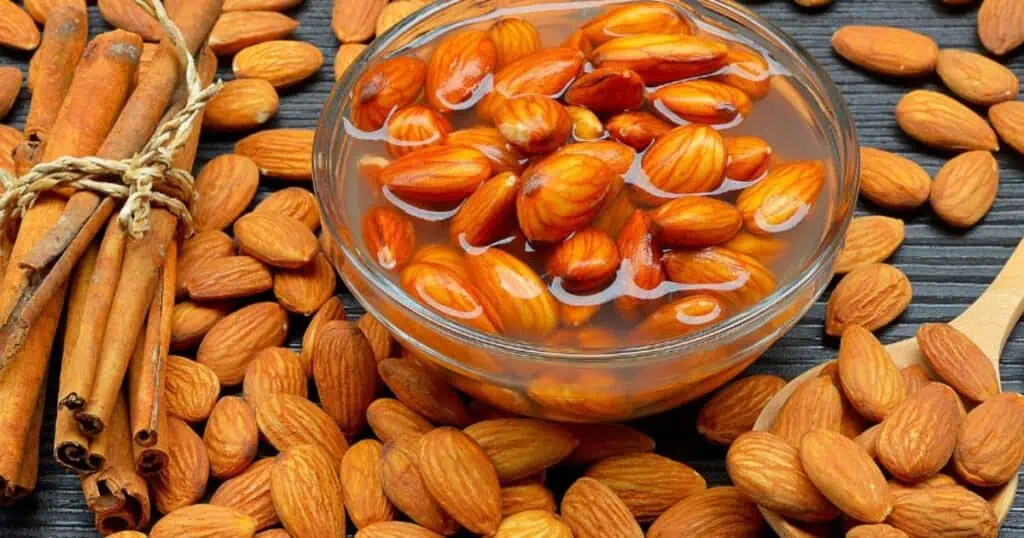Phytic Acid: Antioxidant or Anti-Nutrient?

Do you soak your seeds or grains before cooking?
People who eat a lot of nuts and seeds, grains and legumes know how hard they can be to digest. So they learned to soak them before eating or cooking to help improve their digestibility and, in some cases, increase their nutrition.
Did you know soaking may also be removing an “anti-nutrient” from plant-based proteins, as well? Meet the anti-nutrient, phytic acid.
Naturally present in most nuts, seeds, grains, and legumes, phytic acid allows those plants to store the mineral phosphorus, and provides energy when the plant is growing. That’s good, right? Right.
The problem is that it also binds to the minerals iron, zinc, and calcium. This binding prevents these important nutrients from being fully absorbed when eaten. That’s why it is known as a “mineral reducer,” or anti-nutrient.
It isn’t all bad – there are some health benefits too.
Phytic acid’s health benefits as an antioxidant
Antioxidants are substances that may protect your cells against free radicals, which may play a role in heart disease, cancer, and other diseases. Free radicals are molecules produced when your body breaks down food or when you’re exposed to tobacco smoke or radiation.
In its role as an antioxidant, it forms bonds with certain metals to reduce free radical oxidation, and can help reduce the risk of kidney stones, heart disease, and even some cancers.
Because it loves minerals (which are metals), phytic acid in your gut can also bind to any heavy metals (the metals we don’t want too much of) that may have hitched a ride with your food.
So phytic acid is both an antioxidant and a heavy metals detoxifier.
FUN FACT: Phytic acid’s effects only apply to mineral-containing foods in the current meal. Once a food containing phytic acid is digested, it does not interact with any minerals in any future meals and there is no impact to the minerals your body has already absorbed. Remember, it has to be in your gut at the same time as the minerals to bind to them.
The highest levels are found in rice bran, wheat bran, wheat germ, almonds, and walnuts. Those are very nutritious foods, and you don’t want to cut them out of your diet completely. So unless most or your meals consist of those foods (or other nuts, seeds, grains, and legumes), you should be fine.
But, considering both the pluses and minuses of phytic acid, you may still want to reduce how much you consume. Especially if you want to increase your mineral intake. If that’s the case, here are three popular methods to naturally reduce its presence in your meals.
3 Ways To Reduce Phytic Acid In Food
- Soaking – Place nuts, seeds, grains or legumes in a bowl, cover with water and leave overnight. Then, drain the water and rinse before eating or preparing.
- Eating foods rich in vitamin C, like leafy greens or citrus fruits, will neutralize the effects of phytic acid.
- Sprouting – After soaking, draining, and rinsing, place damp nuts, seeds, grains or legumes into a container that’s exposed to the air (like a mason jar with a mesh lid). Every 8 hours or so, re-rinse them and drain the water. Continue doing this for a few days until you see sprouts peeking out.
Why do soaking and sprouting help reduce phytic acid in certain foods? Because being wet activates the enzyme phytase, which breaks down phytic acid so minerals like iron, calcium, and zinc can be absorbed.
Remember, phytic acid in food is only a health concern if you are deficient in iron, zinc, and calcium, or if your diet is based largely on nuts, seeds, grains, and legumes.
If you eat a varied diet, then it shouldn’t be as much of a concern. In fact, phytic acid may help increase antioxidants, help rid your body of heavy metals, and reduce the risk of kidney stones, heart disease, and even some cancers.
If you want to reduce phytic acid in your food, remember to soak or sprout your nuts, seeds, grains, and legumes.
Once you do that, here’s a super tasty way to use them!
Almond Vanilla Latte Smoothie
Serves 1
¼ cup almonds, soaked overnight & rinsed
½ cup coconut milk
½ cup strong coffee, cold (or chai tea if you prefer)
½ banana, frozen
1 tsp vanilla extractAdd all ingredients to a blender and blend on high until nuts are smooth.
Add ice, if desired.
Serve & enjoy!
Tip: By using soaked almonds, they tend to blend up smoother than hard and crunchy dry almonds do.

